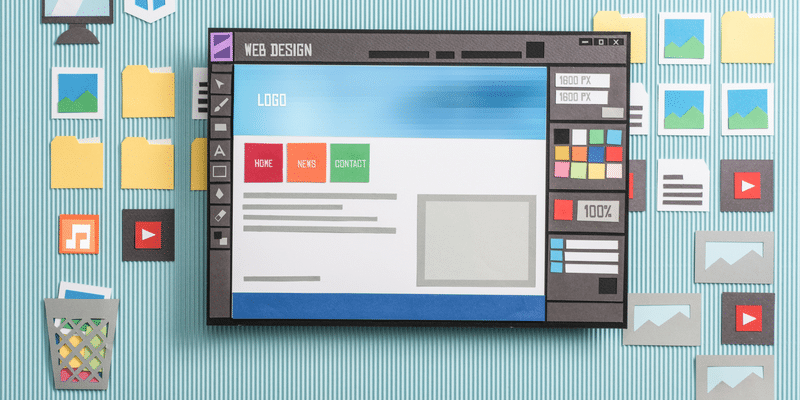Anything you can say to your audience, you should be able to say in 280 characters (double Twitter’s original character count). Twitter is definitely its own ballgame when it comes to using the platform for marketing, and it’s not one of those platforms where you can just shout out at followers when you have something to share and then go back into hiding until the next post. At least, not if you want to tap into the full potential of Twitter.
Marketing At The Speed Of A Tweet
Things move very quickly on Twitter – but they can have enormous reach. According to Christina Newberry’s article, 28 Twitter Statistics All Marketers Need to Know in 2018, there are over 330 million monthly active users globally. As of about three years ago, there are more than 500 million Tweets per day.
As of about three years ago, there are more than 500 million Tweets per day.Click To TweetTwitter is very much about what’s happening now. You can jump in on trending topics, post about local or global events, and of course, promote your business. Twitter can be a bit of a nasty place as well and has a good bit of trolling to go around (is there any place on the Internet that’s free from cyber-bullying?)
Even though Twitter is a social site, many brands and marketers have had enormous success by using the site as a tool to build brand recognition and make B2B conversions.
By now, any of us who have been doing this whole social media marketing thing for some time have seen all the “use hashtags” and “make sure you converse with people” tips. Here are some tips for marketing on Twitter that go deeper than that.
1. Check out influencers’ Twitter lists.
 “Find your influencer or niche guru or person-you-wannabe and check out their Twitter lists. If the lists are public, you can often find and engage with new folks you never knew about.”
“Find your influencer or niche guru or person-you-wannabe and check out their Twitter lists. If the lists are public, you can often find and engage with new folks you never knew about.”
Bonnie Chomica, Marketing and Content Mentor, Marketing Done Write
Follow Bonnie on Twitter @BChomica
'If the lists are public, you can often find and engage with new folks you never knew about,' says @BChomicaClick To Tweet2. Cover your bases.
 “To be successful on Twitter, B2B companies have to cover all bases:
“To be successful on Twitter, B2B companies have to cover all bases:
- Optimize your profile with keywords and properly-sized images
- Create a regular posting cadence, so you don’t get lost in the mix and gain credibility as a fully-vested Twitter user.
- Embed shortened/trackable URLs as well as images or other media in posts to maximize engagement.
- Utilize hashtags to maximize reach
- Identify and engage industry influencers. In fact, consider partnering with or sponsoring influencers.
- Measure reach and engagement via Twitalytics and Google Analytics to inform future content
- Leverage a platform to simplify and automate postings, identify and engage followers and fans (Canva, Hootsuite, Commun.it, etc.)
- Don’t forget calls-to-action to maximize ROI!
- Host Twitter chats, streaming video and other events on Twitter to harness fans.”
Kent Lewis, President and Founder of Anvil Media, Inc
Follow Kent on Twitter @KentJLewis
'Optimize your profile with keywords and properly-sized images,' says @KentJLewisClick To Tweet3. Use Followerwonk and Twitter Custom Tailored Audiences to create a ‘pre-awareness’ campaign.
 “Tailored Audiences are Twitter’s version of Facebook’s Custom Audiences.
“Tailored Audiences are Twitter’s version of Facebook’s Custom Audiences.
“The objective is to place a ‘promoted’ tweet into the newsfeed of the audience that you’ll later reach out to via email, or retarget via Facebook’s ad platform or Google’s display network.
“First, you’ll need to create your tailored audience. Twitter requires a minimum of 1,000 @users to target users via their handles. You can start by building out a list of the EXACT Twitter handles that you want to target. Next, you’ll need to pad out the list with hundreds of other users in your chosen market or demographic.
“For this, you’ll want to sign up to Followerwonk for a month ($29). With FW you can build lists of Twitter handles according to keywords in their bios. Or you can simply grab all of the followers of an influencer. You can download up to 12 CSV files a day.
“You’ll want to combine all of the various handles that you’ve sourced onto one massive Google Sheet or Excel file. Now to clean your list. Remove duplicates, delete users who haven’t tweeted in over 4 weeks and (optional) users with a low amount of followers.
“In order to get Twitter to accept your desired 1000 handles, you’ll need to upload a list that is 3-5 times larger (3-5,000 @users). Twitter’s ad platform can be very finicky. Another thing to note – it will take hours to upload.
“Once your tailored list has been accepted, you’re good to go. All you have to do now is create a Tweet that you plan to promote and publish it. Then go to the ad platform and ‘promote it’. It may take up to 24 hours for them to approve.”
Jason Thibault, Owner & Operator, Massive Kontent
Follow Jason on Twitter @massivekontent
'The objective is to place a ‘promoted’ tweet into the newsfeed of the audience that you’ll later reach out to via email, or retarget via Facebook’s ad platform or Google’s display network,' says @massivekontentClick To Tweet3. Just listen to those looking for what you have to offer.
 “Twitter is great for B2B lead generation. One of the most productive things you can do on Twitter is to just listen. Setup a list of keywords or terms in an app like Hootsuite or Tweetdeck where you can fill a timeline full of people who are looking for the products and services that you have to offer. Lots of people use social media for business recommendations, so actively listening for these people is a great way to start a conversation with people who are actively looking for the services you provide.”
“Twitter is great for B2B lead generation. One of the most productive things you can do on Twitter is to just listen. Setup a list of keywords or terms in an app like Hootsuite or Tweetdeck where you can fill a timeline full of people who are looking for the products and services that you have to offer. Lots of people use social media for business recommendations, so actively listening for these people is a great way to start a conversation with people who are actively looking for the services you provide.”
Robert Richardson, President of Richardson Marketing
Follow Robert on Twitter @RichardsonMKTG
'Setup a list of keywords or terms in an app like Hootsuite or Tweetdeck where you can fill a timeline full of people who are looking for the products and services that you have to offer,' says @RichardsonMKTGClick To Tweet4. Establish credibility.
 “Twitter is an excellent platform for B2B companies to establish credibility by sharing information and trends for the industries most related to what B2B companies have on offer. Sharing this kind of material in tweets rather than sales messages helps inspire your target audiences to have confidence in your products or services.”
“Twitter is an excellent platform for B2B companies to establish credibility by sharing information and trends for the industries most related to what B2B companies have on offer. Sharing this kind of material in tweets rather than sales messages helps inspire your target audiences to have confidence in your products or services.”
Phyllis Zimbler Miller at Miller Mosaic, LLC
Follow Phyllis on Twitter @ZimblerMiller
'Twitter is an excellent platform for B2B companies to establish credibility by sharing information and trends for the industries most related to what B2B companies have on offer,' says @ZimblerMIllerClick To Tweet5. Be strategic with hashtags.
 “Hashtags are a very important part of getting your tweets noticed by people outside of your Twitter followers. It’s not about putting all of the hashtags that you can think of to get people to see your tweet. It’s about strategically picking the right hashtag in order for your tweet to be found by the RIGHT PEOPLE. Using a tool like RiteTag can help you indicate which hashtags to use in your Twitter posts.”
“Hashtags are a very important part of getting your tweets noticed by people outside of your Twitter followers. It’s not about putting all of the hashtags that you can think of to get people to see your tweet. It’s about strategically picking the right hashtag in order for your tweet to be found by the RIGHT PEOPLE. Using a tool like RiteTag can help you indicate which hashtags to use in your Twitter posts.”
Samantha Walls, Inbound Marketing Manager and Social Media Manager at Intouch Marketing
Follow Samantha on Twitter @samanthawitmk
'It’s not about putting all of the hashtags that you can think of to get people to see your tweet. It’s about strategically picking the right hashtag in order for your tweet to be found by the RIGHT PEOPLE.' @samanthawitmkClick To Tweet6. You shouldn’t have to stretch to interact with your target market.
 “Want to get a someone’s attention on Twitter such as a potential client, a future referral partner or influencer? Give before you ask. Give by liking, RT’ing and replying to their links. Make sure that you’re adding value and that they are in line with your business and personal values. If you find that you’re having to stretch it very thin to add value or make them a fit, that’s a good sign you maybe shouldn’t be pursuing them in the first place.”
“Want to get a someone’s attention on Twitter such as a potential client, a future referral partner or influencer? Give before you ask. Give by liking, RT’ing and replying to their links. Make sure that you’re adding value and that they are in line with your business and personal values. If you find that you’re having to stretch it very thin to add value or make them a fit, that’s a good sign you maybe shouldn’t be pursuing them in the first place.”
Beth Bridges, The Networking Motivator and Author of “Networking on Purpose”
Follow Beth on Twitter @BethBridges
'If you find that you’re having to stretch it very thin to add value or make them a fit, that’s a good sign you maybe shouldn’t be pursuing them in the first place,' says @BethBridgesClick To Tweet7. Make it easy for people to tweet your content.
 “With my experience as a twitter expert for marketing agencies and blogs, I’ll be sharing three (3) real quick hacks that have worked and still work for me today.
“With my experience as a twitter expert for marketing agencies and blogs, I’ll be sharing three (3) real quick hacks that have worked and still work for me today.
“The first is called the follow-first strategy and as the name implies, it involves finding and following relevant twitter profiles to follow with hopes of getting followed back. So what I do is this;
“For any Twitter brand I work with, one of my daily tasks is to find and follow 10-15 twitter profiles in the same niche (as the brand). This works pretty well because it was found that a good percentage of users you follow will follow you back.
“I then unfollow ones who never tweet/follow back.
“Secondly, to generate blog traffic from Twitter, I have a simple formula you can easily copy:
- Tweet multiple (3-6) times every day.
- Use click-to-tweets in your blog content.
- Use images and include 2-3 hashtags per tweet.
- Get visitors to share (tweet) your content. Use optimized social share buttons on your website.
“Lastly, the strategy I call the ‘steal their fans’ technique is one which I rarely talk about (except to my subscribers, of course). As the name implies, it literally involves stealing other people’s fans.
“Think your competition, influencers, celebrities etc.
“All you need to do is get them to tweet about you, share your stuff or recommend you. Lots of people can get to know you just from tweets from influencers or big brands.
“I’ve even gotten business clients from simple tweets like these.”
Simon Zaku, Twitter Marketer for Online Stores & Blogs
Follow Simon on Twitter @s_zakuu
'Use click-to-tweets in your blog content,' says @s_zakuu.Click To Tweet8. Ensure images and videos show up.
 “According to Twitter, tweets that include a photo can boost retweets by up to 35% and adding a video can result in a 28% boost.
“According to Twitter, tweets that include a photo can boost retweets by up to 35% and adding a video can result in a 28% boost.
“Photos and videos are important for engagement, but how you add them to your tweets matters. Twitter’s Image Expand feature only works if you tweet via the Twitter app or the website itself. Image Expand is useful because it attracts users’ eyes within the feed.”
Zondra Wilson, Founder/CEO Blu Skin Care
Follow Zondra on Twitter @bluskincare
'Twitter’s Image Expand feature only works if you tweet via the Twitter app or the website itself,' says @bluskincareClick To Tweet9. Invest in content series.
 “For B2B companies, investing into content series is a strong play. Try to own a day of the week, like Moz has done with Whiteboard Fridays, focus on a hyper-specific kind of visual asset, like Arby’s has done with nerd-flavored paper crafts, or take control of an underused hashtag, like TrailBlazer SEO has done with #CannabisFacts. Focusing on a content series will help develop your brand identity faster, inspire copycats who will promote your brand in a roundabout way, and streamline content creation.”
“For B2B companies, investing into content series is a strong play. Try to own a day of the week, like Moz has done with Whiteboard Fridays, focus on a hyper-specific kind of visual asset, like Arby’s has done with nerd-flavored paper crafts, or take control of an underused hashtag, like TrailBlazer SEO has done with #CannabisFacts. Focusing on a content series will help develop your brand identity faster, inspire copycats who will promote your brand in a roundabout way, and streamline content creation.”Joe Goldstein, SEO Director / Operations Manager at Contractor Calls
Follow Joe on Twitter @JoeAdamG
'Focusing on a content series will help develop your brand identity faster, inspire copycats who will promote your brand in a roundabout way, and streamline content creation,' says @JoeAdamGClick To Tweet10. Start creating conversations.
 “There are a bunch of standard “best practices” when it comes to making your brand’s messages more visible on Twitter, but I personally think it’s even more important to focus on engagement. So, my #1 tip for B2B marketing on Twitter would be to “treat your interactions like conversations”.
“There are a bunch of standard “best practices” when it comes to making your brand’s messages more visible on Twitter, but I personally think it’s even more important to focus on engagement. So, my #1 tip for B2B marketing on Twitter would be to “treat your interactions like conversations”.Pierre de Braux, Content Strategist at Spiralytics Inc.
Follow Pierre on Twitter @PierredeBraux
'A good rule of thumb would be to ensure around a third of your tweets are retweets and responses to other users,' says @PierredeBrauxClick To Tweet11. Put a customer profile or two into practice.
 “When working with Twitter it’s important to know your audience more than any other platform. Audiences are always paramount, but at Hyped we’ve found that Twitter audiences have even shorter attention spans and very specific content they enjoy. If you’re unsure what your audience likes, it’s time to put a Customer Profile or two in place, and then start testing a lot of content based on who that customer is. Are they into politics? Memes? Do they click links or is it better to have your content all within the Tweet? What about photos, GIFs, and hashtags? You only have 280 characters, so make them count every time”
“When working with Twitter it’s important to know your audience more than any other platform. Audiences are always paramount, but at Hyped we’ve found that Twitter audiences have even shorter attention spans and very specific content they enjoy. If you’re unsure what your audience likes, it’s time to put a Customer Profile or two in place, and then start testing a lot of content based on who that customer is. Are they into politics? Memes? Do they click links or is it better to have your content all within the Tweet? What about photos, GIFs, and hashtags? You only have 280 characters, so make them count every time”
Morgan McGregor, Photography & Online Content Specialist at Hyped
Follow Hyped on Twitter @HypedNZ
'If you're unsure what your audience likes, it's time to put a Customer Profile or two in place, and then start testing a lot of content based on who that customer is,' says @HypedNZClick To Tweet12. Don’t assume people will just hop on your unique hashtag.
 “Twitter chats are a great way of gaining traction for B2B purposes, they provide you with a great opportunity to speak with peers, thought leaders and other businesses in an organised way. If you can take anything from it, then it would be the networking aspect.
“Twitter chats are a great way of gaining traction for B2B purposes, they provide you with a great opportunity to speak with peers, thought leaders and other businesses in an organised way. If you can take anything from it, then it would be the networking aspect.
“Sharing others tweets and images are an excellent way to giving kudos, freshening up your own content and getting noticed by the business who originally posted the information.
“Using the right sort of hashtags. Don’t just assume people will jump on your own personalised hashtag! A hashtag is like a breadcrumb, you leave a trail every time you use one, leave the right sort of breadcrumbs and people will start to follow you. Keep them simple, relevant and locational.”
Rhys Jenkins, Social Media Manager at Traffic Jam Media
Follow Traffic Jam Media on Twitter @trafficjammedia
'Don’t just assume people will jump on your own personalised hashtag! A hashtag is like a breadcrumb, you leave a trail every time you use one, leave the right sort of breadcrumbs and people will start to follow you,' says @trafficjammediaClick To Tweet13. Post more than just links.
 “The biggest mistake that corporate Twitter accounts make is posting too many links. Think about it from the customer side. People are on Twitter to skim through a feed, not to click on links. Provide tips, share infographics, use videos, and visuals, and then post a useful link. Try to provide useful value first before promoting anything on Twitter.”
“The biggest mistake that corporate Twitter accounts make is posting too many links. Think about it from the customer side. People are on Twitter to skim through a feed, not to click on links. Provide tips, share infographics, use videos, and visuals, and then post a useful link. Try to provide useful value first before promoting anything on Twitter.”Sydney Liu, co-founder of Commaful
Follow Sydney on Twitter @Sydney_Liu_sl
'Provide tips, share infographics, use videos, and visuals, and then post a useful link,' says @Sydney_Liu_slClick To Tweet14. Don’t neglect the importance of your bio.
 “When I’m checking out a business on Twitter, I always go to the profile page and check out their bio. That’s why my top tip is to work the bio. It may be short, but there’s plenty of room for an elevator pitch and some social proof. For example, Buffer’s Twitter bio says what the tool is, what it provides for people, and how many users it has. And SEMrush’s bio showcases the benefits for users. The bio’s a great place to add a link when you have something new to share. It’s also important not to let your bio be “set it and forget it”. Update it regularly when you want to promote an event or release a new feature or product.”
“When I’m checking out a business on Twitter, I always go to the profile page and check out their bio. That’s why my top tip is to work the bio. It may be short, but there’s plenty of room for an elevator pitch and some social proof. For example, Buffer’s Twitter bio says what the tool is, what it provides for people, and how many users it has. And SEMrush’s bio showcases the benefits for users. The bio’s a great place to add a link when you have something new to share. It’s also important not to let your bio be “set it and forget it”. Update it regularly when you want to promote an event or release a new feature or product.”
Sharon Hurley Hall, Professional Writer and Blogger
Follow Sharon on Twitter @shurleyhall
'That's why my top tip is to work the bio. It may be short, but there's plenty of room for an elevator pitch and some social proof,' says @shurleyhallClick To Tweet15. Don’t forget about Twitter advanced search.
 “Don’t forget about Twitter Advanced Search. It’s similar to using Google search operators. Meaning you can narrow the search results to topics and people more relevant to what you’re actually looking for. There are tons of uses here, but I’ve found it most helpful when doing cold outreach.
“Don’t forget about Twitter Advanced Search. It’s similar to using Google search operators. Meaning you can narrow the search results to topics and people more relevant to what you’re actually looking for. There are tons of uses here, but I’ve found it most helpful when doing cold outreach.
16. The line between sales and marketing is getting blurred.
 “I haven’t found Twitter to be the best place for B2B marketing. However, this highlights a very important point that I don’t think gets nearly enough recognition. That is: the digital sphere is increasingly blurring the line between sales and marketing. I think Twitter can be highly effective in building B2B relationships (something that used to be strictly classified as sales, but now often falls under the marketing umbrella). I start by retweeting a company’s tweets and following the accounts of relevant decision makers. Over a period of a couple weeks (you don’t want to look like a stalker) start commenting on the tweets of relevant decision makers, and tagging them in a tweet you think they’ll find useful. Once you get their attention, reinforce the relationship by connecting with them on LinkedIn. Once you connect with them on LinkedIn, you can pull them into your sales pipeline.”
“I haven’t found Twitter to be the best place for B2B marketing. However, this highlights a very important point that I don’t think gets nearly enough recognition. That is: the digital sphere is increasingly blurring the line between sales and marketing. I think Twitter can be highly effective in building B2B relationships (something that used to be strictly classified as sales, but now often falls under the marketing umbrella). I start by retweeting a company’s tweets and following the accounts of relevant decision makers. Over a period of a couple weeks (you don’t want to look like a stalker) start commenting on the tweets of relevant decision makers, and tagging them in a tweet you think they’ll find useful. Once you get their attention, reinforce the relationship by connecting with them on LinkedIn. Once you connect with them on LinkedIn, you can pull them into your sales pipeline.”Mary Clare Bland, Chief Strategist at Bespoke Digital Solutions
Follow Mary Clare on Twitter @mary_clare299
'I think Twitter can be highly effective in building B2B relationships (something that used to be strictly classified as sales, but now often falls under the marketing umbrella),' says @mary_clare299Click To Tweet17. Use your personality to stand out.
 “Tweeting quality content is better than focusing on the number of tweets you have. The content you share should be relevant to your followers and impact them in some way, whether to make them laugh or provide valuable information.
“Tweeting quality content is better than focusing on the number of tweets you have. The content you share should be relevant to your followers and impact them in some way, whether to make them laugh or provide valuable information.
“To stand out on Twitter, you need to have a unique personality that people will gravitate towards. If you haven’t defined your personality, first see what your competitors are doing. Then, go back to your business roots and ask yourself, “What is my business all about?” After this, you should have an idea of your business personality.”
Holly Zink, Digital Marketing Associate at The Powerline Group
Follow Holly on Twitter @hzink2011
'To stand out on Twitter, you need to have a unique personality that people will gravitate towards,' says @hzink2011Click To Tweet18. Don’t be afraid to advertise.
 “Social media is a powerful tool for B2B marketers because it allows them to create an ongoing relationship with the consumer that lasts beyond an inquiry. Creating a conversation and establishing a voice keeps a brand or company top-of-mind, and social media allows us to do this easily and frequently. It lets the potential consumer know what your differentiating factors are, that you’re an expert, and is not as salesy as other forms of media. At Bigbuzz Marketing Group, we believe in authenticity first and foremost. Social media/Twitter marketing tips from our Head of Digital Strategy are as follows:
“Social media is a powerful tool for B2B marketers because it allows them to create an ongoing relationship with the consumer that lasts beyond an inquiry. Creating a conversation and establishing a voice keeps a brand or company top-of-mind, and social media allows us to do this easily and frequently. It lets the potential consumer know what your differentiating factors are, that you’re an expert, and is not as salesy as other forms of media. At Bigbuzz Marketing Group, we believe in authenticity first and foremost. Social media/Twitter marketing tips from our Head of Digital Strategy are as follows:
“Audit yourself, identify your competition, and research what they are doing. Cover all of your bases to find out where you’re not stacking up content-wise in the industry conversation and where the opportunity is for you to become a thought leader.
“Don’t be afraid to advertise your content to gain traction. Twitter ads are there for you. The more times your desired and potential customers see your messaging, the better.
“Without getting into the controversial or polarizing trending topics, use the trending hashtags of the day from time to time when you can cleverly make them relevant to you or topics you may frequently address indirectly.
“Promote industry-related content and add your own commentary. Find articles. Add your thoughts. Become a thought leader and source of good information.
“Use at least one hashtag per tweet, always.
“Start your own branded hashtag for consistency if some of your content focuses on your company’s internal processes (i.e. employees, work space, etc.)
“Keep everything digestible. Just because you can use more characters now doesn’t mean you should. Look for strong retweet-able quotes and info. Use images and video when you can. Even Twitter users need charts and infographics.
“Keep your tone and voice consistent. Even if there are 10 people posting from the same handle, the brand voice needs to stay intact and recognizable.
“Go beyond follower engagement on your posts. Actually, follow your core followers. By that, I mean that you should actively follow the people who interact with you the most and engage with them on their content too. A liked tweet can go a long way. Follow and frequently reply and engage with other industry publications, influencers, customers and brands to keep two-way conversation constant too.
“Don’t just follow people back. Consistently follow competitors’ followers daily, within reason (there are limits!), and then scrub the list of who you follow weekly to remove people who didn’t follow you back.
“Know your audience. Don’t tweet when your customer is sleeping and expect engagement. Timing and frequency are key.
“Balance your content: you need a healthy mix of branded content, sourced content and links back to your site.
“Don’t be afraid to use a little humor, especially when you find a reason to dispute a competitor or publication’s twitter statement. If you’re right, you should unabashedly say it, but in an approachable and never combative way. You’re trying to run a business and help customers, after all. It could create a little buzz too. Just make sure you’re right first!”
Negeen Ghaisar, Head of Digital Strategy, Bigbuzz Marketing Group
Follow Negeen on Twitter @bigbuzznyc
'Don't be afraid to advertise your content to gain traction. Twitter ads are there for you. The more times your desired and potential customers see your messaging, the better,' says @bigbuzznycClick To Tweet19. Know what your long game is.
 “B2B businesses need to take a long game approach to their Twitter marketing strategies. The platform itself moves quickly and prioritizes brevity, but the decision-making process for a B2B customer tends to be drawn out and nuanced. In a B2B environment, the focus should be on providing value and building relationships and not on sales or conversion rates. Implementing a robust content calendar that exposes followers to consistent messaging over time is an essential first step as it will take repeated exposure to the same content to gain attention. Build relationships by sharing information or tips to potential clients by getting involved in organized Twitter chats or following trending hashtags relevant to your industry. It may take some time but done right, incorporating Twitter into your B2B marketing strategy will eventually pay off.”
“B2B businesses need to take a long game approach to their Twitter marketing strategies. The platform itself moves quickly and prioritizes brevity, but the decision-making process for a B2B customer tends to be drawn out and nuanced. In a B2B environment, the focus should be on providing value and building relationships and not on sales or conversion rates. Implementing a robust content calendar that exposes followers to consistent messaging over time is an essential first step as it will take repeated exposure to the same content to gain attention. Build relationships by sharing information or tips to potential clients by getting involved in organized Twitter chats or following trending hashtags relevant to your industry. It may take some time but done right, incorporating Twitter into your B2B marketing strategy will eventually pay off.”
Kristine Neil, Founder and Creative Director at Markon Brands
Follow Kristine on Twitter @Thekneil
'Implementing a robust content calendar that exposes followers to consistent messaging over time is an essential first step as it will take repeated exposure to the same content to gain attention,' says @ThekneilClick To Tweet20. Create Twitter lists.
 “Twitter lists are an easy way to segment different groups of key accounts you may follow and want to engage with. This is a great feature B2B marketers should take advantage of. For example, we created a Twitter list for a SaaS client that existed of their 20 key client accounts. This allows us to keep an eye on valuable content that our clients are putting out and gives us the opportunity to engage timely in two-way conversations. Our engagement rates (comments and ReTweets) have already seen an increase using this strategy!”
“Twitter lists are an easy way to segment different groups of key accounts you may follow and want to engage with. This is a great feature B2B marketers should take advantage of. For example, we created a Twitter list for a SaaS client that existed of their 20 key client accounts. This allows us to keep an eye on valuable content that our clients are putting out and gives us the opportunity to engage timely in two-way conversations. Our engagement rates (comments and ReTweets) have already seen an increase using this strategy!”Elise Telford, Marketing & Brand Strategist at Futurety
Follow Futurety on Twitter @futuretyhc
'Twitter lists are an easy way to segment different groups of key accounts you may follow and want to engage with,' says @futuretyhcClick To Tweet21. Save the hashtags for last.
 “There’s no need to hashtag every word. Using 1-3 key hashtags, at the end of your post, is the optimal amount to increase your tweet’s engagement without looking spammy.”
“There’s no need to hashtag every word. Using 1-3 key hashtags, at the end of your post, is the optimal amount to increase your tweet’s engagement without looking spammy.”
Rebecca Teaff, Founder Redstart Creative
Follow Rebecca on Twitter @redstartcreativ
'Using 1-3 key hashtags, at the end of your post, is the optimal amount to increase your tweet's engagement,' says @redstartcreativClick To Tweet22. Use all 280 characters to your advantage.
 “Now that they give you 280 characters use them to expand your message and leverage video to get more exposure. The data shows longer tweets with videos are the most successful.”
“Now that they give you 280 characters use them to expand your message and leverage video to get more exposure. The data shows longer tweets with videos are the most successful.”
Paige Arnof-Fenn, Founder & CEO of Mavens & Moguls
Follow Mavens & Moguls on Twitter @mavenmoguls
'The data shows longer tweets with videos are the most successful,' @mavenmogulsClick To Tweet23. Learn who the people behind the business are.
 “I find that Twitter is a great way to connect with the actual decision makers at any given business. As a B2B business, I will do my research to identify who the decision makers are within a company, and those are the people that I connect with and tweet to – not just the business itself. I suggest that B2B businesses do their diligence when determining who to follow – yes, follow the businesses, but also be aware of the people behind the business. This is a great way to get on the radar of the right people at the company you are targeting. That being said, ensure that you’re not spamming them with your pitches, or inundating them with requests for meetings… the goal should be to increase your awareness, build a relationship, and build your network… after they get to know you a little bit, hopefully, establish some trust, then you can propose the next level of working together. ”
“I find that Twitter is a great way to connect with the actual decision makers at any given business. As a B2B business, I will do my research to identify who the decision makers are within a company, and those are the people that I connect with and tweet to – not just the business itself. I suggest that B2B businesses do their diligence when determining who to follow – yes, follow the businesses, but also be aware of the people behind the business. This is a great way to get on the radar of the right people at the company you are targeting. That being said, ensure that you’re not spamming them with your pitches, or inundating them with requests for meetings… the goal should be to increase your awareness, build a relationship, and build your network… after they get to know you a little bit, hopefully, establish some trust, then you can propose the next level of working together. ”
Meg Brunson, Founder & CEO of EIEIO Marketing
Follow EIEIO Marketing on Twitter @EIEIOMarketing
'As a B2B business, I will do my research to identify who the decision makers are within a company, and those are the people that I connect with and tweet to - not just the business itself,' says @TheMegBrunsonClick To Tweet24. Don’t get buried in the newsfeed.
 “Twitter is unlike any other social media platform. In order to truly build your audience and grow your following, you need to be active every day – whether it’s engaging with your audience, updating your feed, checking your feed, or joining trending conversations within your industry.
“Twitter is unlike any other social media platform. In order to truly build your audience and grow your following, you need to be active every day – whether it’s engaging with your audience, updating your feed, checking your feed, or joining trending conversations within your industry.
“Twitter is one giant newsfeed that is constantly updated every few seconds. If you’re only posting one tweet every few days, you can guarantee that these tweets are getting buried under hundreds of others from other profiles, and possibly your competitors. This is why staying active and joining the conversation is so important.
“Get back to those who tweeted to you. Like and retweet content that you find interesting and important. Identify and connect with the top experts or organizations in your industry – Twitter Influencers (those who often have a large following & blue checkmark). These influencers can be viewed as assets to have in your audience. This doesn’t take as much time as you think and it makes a huge difference. The more you engage with Twitter influencers, the more people will see your profile and connect.
“Since Twitter’s feed possesses so much content, it’s important you maintain a professional and clean profile, as well. Once someone clicks on your profile, you want to keep them there – or bring them to your website. In your bio, include keywords and hashtags that are specific to your expertise, a clear (and short) description of what you do, your location, and a link to your website. It’s easy for someone to miss your content in the newsfeed; however, if they click on your profile and see a clear bio, people will likely scroll down your timeline and see what your organization has to offer.”
Erik Bunaes, Endorphin Advisors, LLC
Follow Erik on Twitter @Endorphinadvs
'It’s easy for someone to miss your content in the newsfeed; however, if they click on your profile and see a clear bio, people will likely scroll down your timeline and see what your organization has to offer,' says @EndorphinadvsClick To Tweet25. Tweet during peak hours.
 “Timing is everything – especially when creating and planning your social media content. Not only is it important to have great content, but you should also tweet during peak hours for maximum engagement with your audience. It’s always best to research the best time to post on Twitter and other social media platforms you’re using, and always use analytics to learn more about your audience, engagement, likes and tailor your content and schedule from there.”
“Timing is everything – especially when creating and planning your social media content. Not only is it important to have great content, but you should also tweet during peak hours for maximum engagement with your audience. It’s always best to research the best time to post on Twitter and other social media platforms you’re using, and always use analytics to learn more about your audience, engagement, likes and tailor your content and schedule from there.”Tracy Memoli, Co-Founder of FrutaPOP
Follow Tracy on Twitter @tracymemoli
26. Connect with your competitors.
 “My biggest tip for Twitter marketing is to not only connect with people that you are trying to get business from but to connect with your direct competitors. By following them, you get to see what they are doing, but also, you might be able to get something out to other people that follow them through retweets and using similar hashtags. Plus, just because people are following them, doesn’t mean they all have the business. People follow lot’s of people, and if you can become relevant at the time someone needs you, with the right offer, they will come to look to you as well. However, if you stay in your own corner and don’t get yourself out there, nobody will know about you.
“My biggest tip for Twitter marketing is to not only connect with people that you are trying to get business from but to connect with your direct competitors. By following them, you get to see what they are doing, but also, you might be able to get something out to other people that follow them through retweets and using similar hashtags. Plus, just because people are following them, doesn’t mean they all have the business. People follow lot’s of people, and if you can become relevant at the time someone needs you, with the right offer, they will come to look to you as well. However, if you stay in your own corner and don’t get yourself out there, nobody will know about you.
“Additionally, you may do something better than your competitor, and they may do certain things better than you. If you refer business to them, they are more likely to reciprocate when they recognize what you can offer will help someone more than what they have.”
Steven Morrison, Digital Marketing Consultant, Red Link Marketing, LLC
Follow Steven on Twitter @stevejmorrison
'My biggest tip for Twitter marketing is to not only connect with people that you are trying to get business from, but to connect with your direct competitors,' says @stevejmorrison.Click To Tweet27. Make your Twitter account a PR channel.

 “I’d recommend turning your Twitter account into a PR channel. If you’re a B2B company, try building relations using replies and DM campaigns. Make sure to offer something valuable before asking for anything in return.
“I’d recommend turning your Twitter account into a PR channel. If you’re a B2B company, try building relations using replies and DM campaigns. Make sure to offer something valuable before asking for anything in return.Don’t just hop onto trending topics if they’re not relevant.
It can be really tempting to hop onto lots of trending topics, but if they aren’t relevant to what you’re doing, then it’s really not worth it – especially if a trending topic takes you on a tangent that’s completely irrelevant to your target audience. Not only will you pick up followers who are outside of your engagement group, but you risk creating confusion about what your brand is and what it does. Choose what trending topics you participate in closely, and be sure when you do participate, you’re adding value to the conversation.
'Choose what trending topics you participate in closely, and be sure when you do participate, you're adding value to the conversation,' says Ronda_Bowen.Click To TweetWhat has worked well for you and your team?
Before you get out there and put all of these great tips into action, make some notes. Who is your ideal customer? What is that person likely to respond to or retweet? Which of the above tips are likely to, when acted on, attract those followers?
Once you have a solid plan to act on, go forth and tweet. But first, if you have an additional tip you’d like to share, leave it in our comments or tweet it to @CMindscape.
Ronda Bowen is VP of Editorial Services at Creative Mindscape. She also provides editorial consulting services to a variety of businesses and individuals, runs a handful of blogs (including WiningWife®), and serves as Fundraising Director for JB Dondolo, Inc. In her downtime, she’s a distance runner, a foodie, a wine and coffee aficionado, seamstress and crafter, and board game enthusiast. Learn more about Ronda’s various projects on her website.




